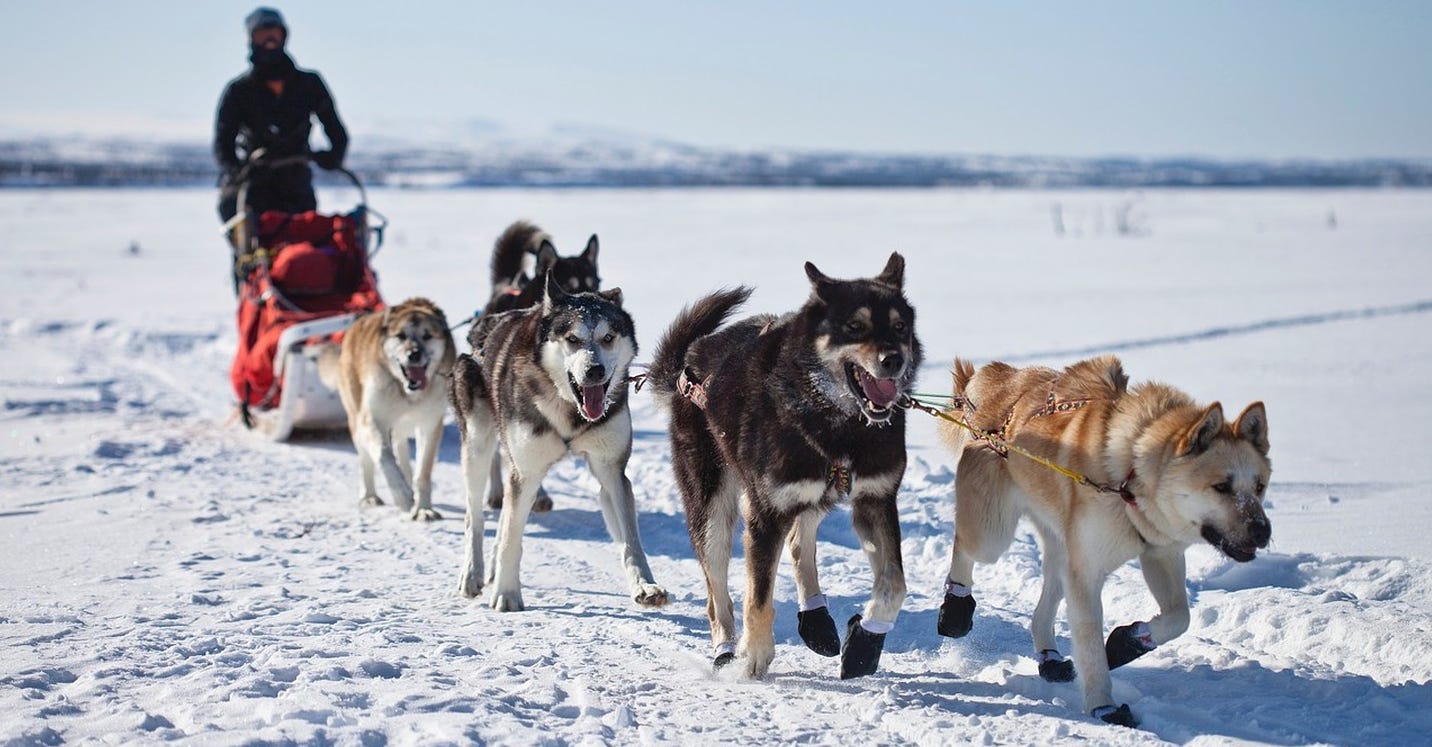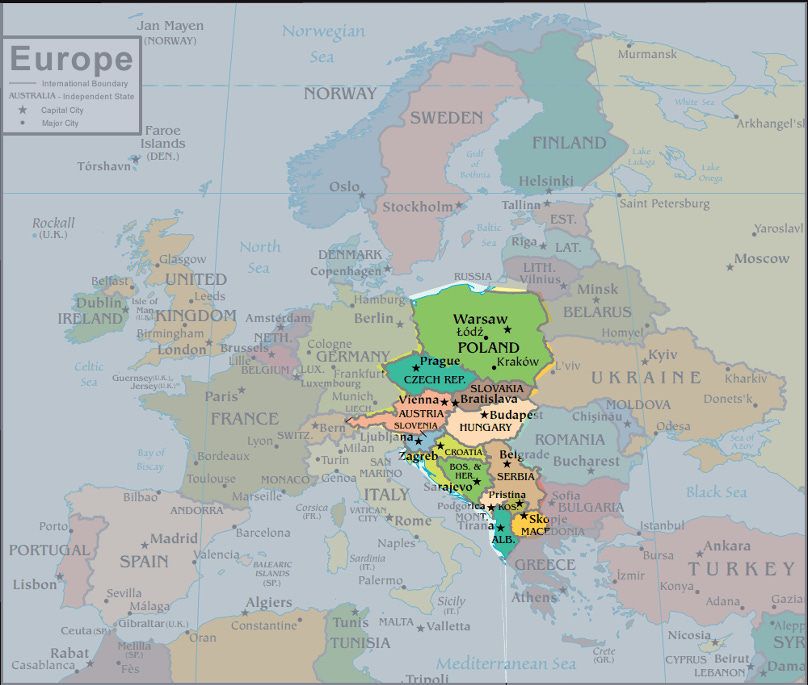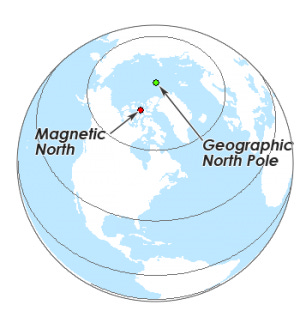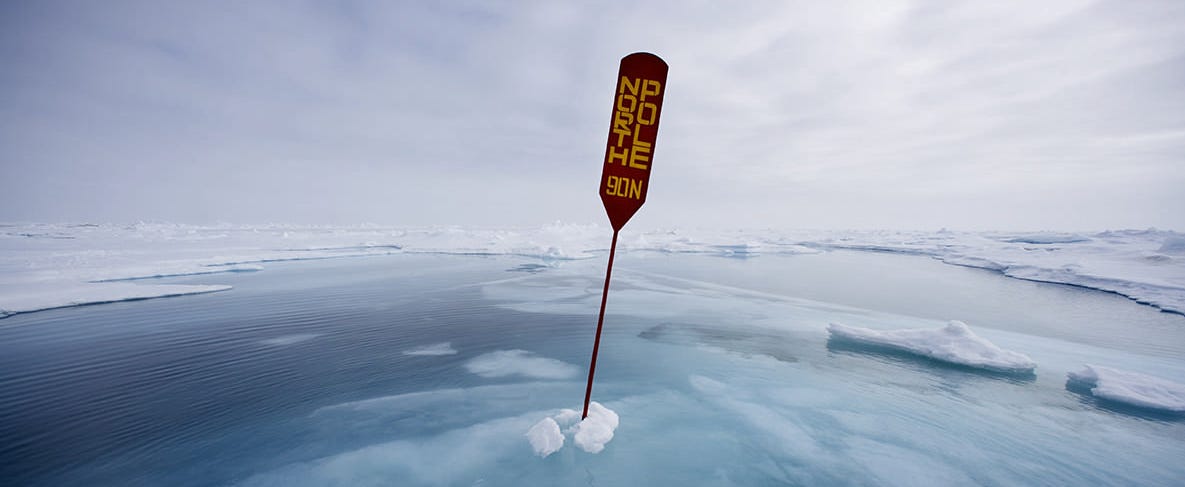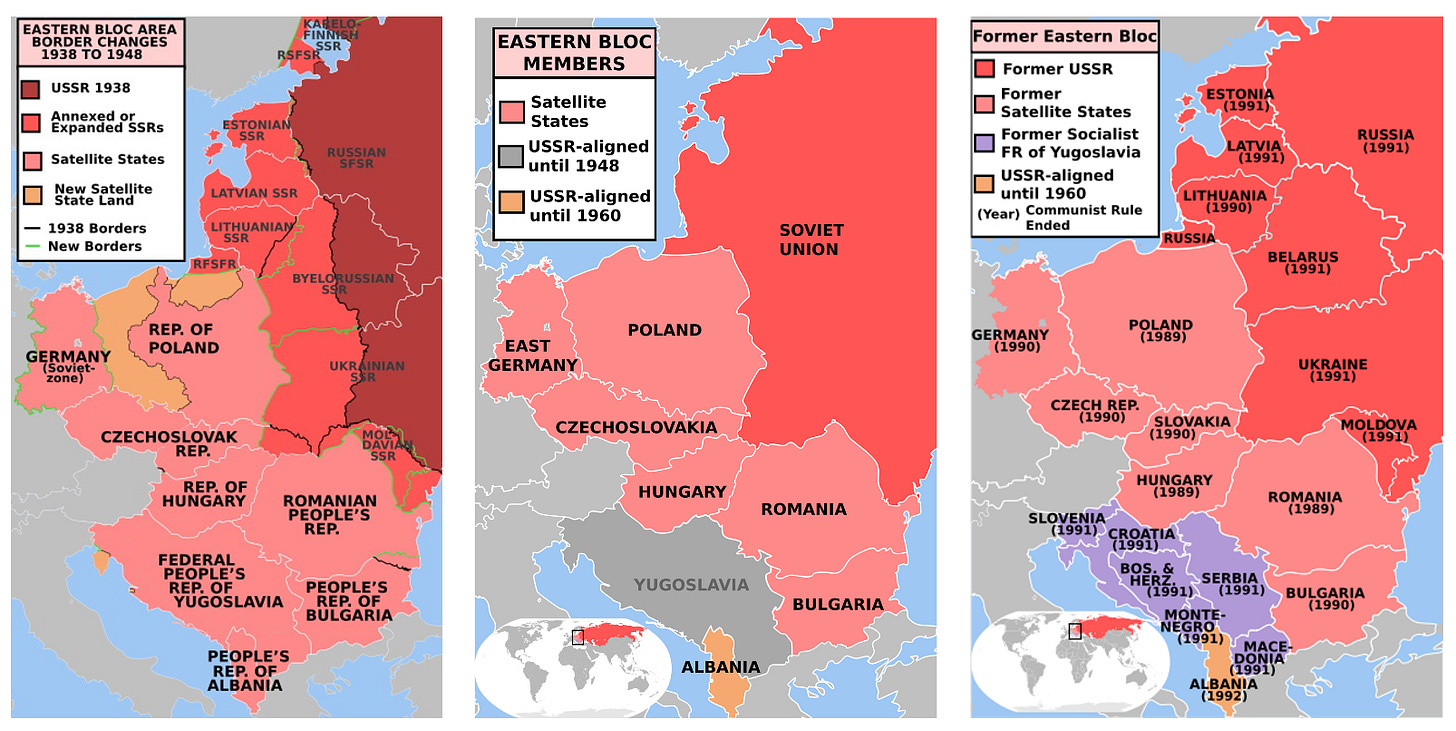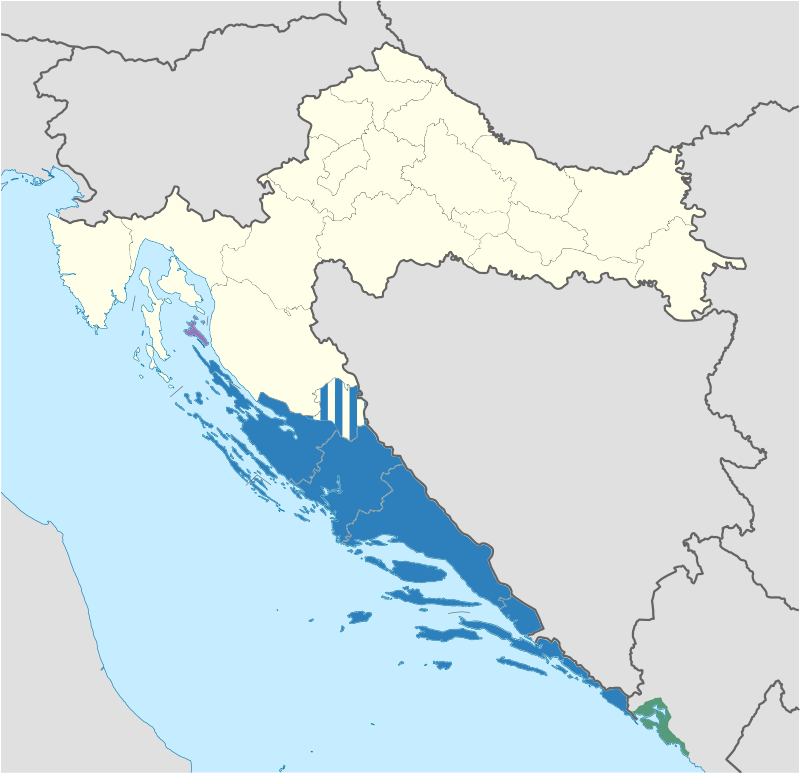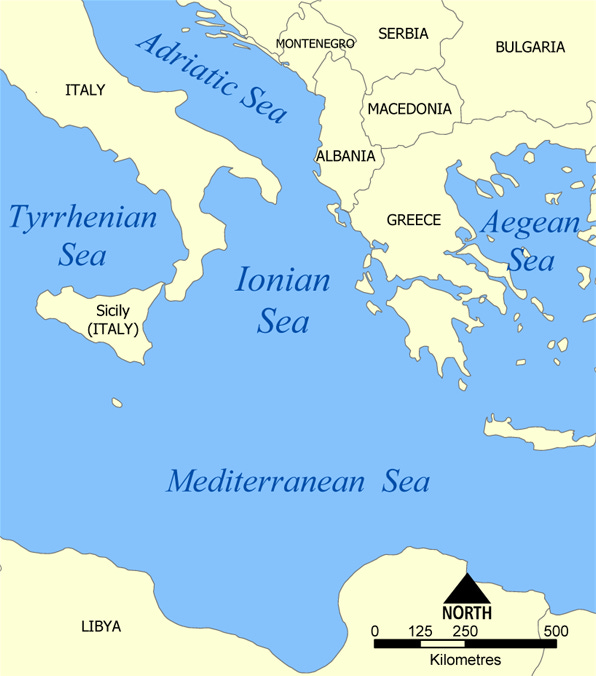Geography - Europe (Part 2)
Tips & Tricks for Memorizing Countries in Europe
Welcome back to this series on geography!
In the first post on this topic, we covered distances around the world.
The next post gave you some tips on memorization.
We then started by looking at countries in North America and Central America.
And then we traveled to South America.
Then we began in Europe with countries from Estonia to Greece.
Today we pick up with the next line of countries from Poland to North Macedonia.
A Pretest
For a quiz on the names/locations of countries in Europe, go here. You can go to this website or this website to take a quiz on country names/locations across the world.
Europe
Europe is comprised of 44 countries; in the last post, we tackled nine of those countries—Estonia, Latvia, Lithuania, Belarus, Ukraine, Moldova, Romania, Bulgaria, Greece.
In this post, we’re going to tackle 12 countries—Poland, Czech Republic, Slovakia, Austria, Hungry, Slovenia, Croatia, Bosnia & Herzegovina, Serbia, Montenegro, Albania, and North Macedonia. We’ll also cover Kosovo.
You can see them highlighted in the map below. We have a lot to cover, so, buckle into your sled.
Why “sled?” Well, partly because of the winter season, but also because we’re going to use the imagery of dog sledding to help us remember these countries.
Here’s the story to help you remember these countries:
You’re going to dog sled to the LAND of the North POLE (Poland)
As you prepare to do so, you CHECK (Czech Republic) your SLED (Slovakia)
You feed your AUSTRIAN (Austria) Husky dogs that are HUNGRY (Hungry)
You start SLOW (Slovenia), then CRACK (Croatia) your whip to drive the dogs faster
The dogs BOUND ahead--the frequency of their steps grows (Bosnia & Herzegovina)
They SURGE (Serbia) over the MOUNTAIN (Montenegro)
Soon, there’s nothing but white (Albania) snow and ice ahead of you as you reach the NORTH Pole on a massive sheet of ice (North Macedonia).
You’ll have to use your imagination a little more on this one that on the strongman competition, as the words don’t as perfectly align with our images, but, I think you’ll get the gist as go through it.
But, before we go through the memorization piece, let’s talk about animals and pole exploration.
From Camels to Dog Sledding
Thanks to animals, we’ve been able to accomplish much in human history. We’ve used them for work, clothing, food, science, medicine, and of course, pets.
I was especially struck by how dependent man is on animals while spending some time in Saudi Arabia and seeing all that camels were capable of and had allowed people to do there.
Camels are amazing creatures, able to go months without water and able to go long distances in extreme temperatures. Had it not been for these animals, there’s no way Bedouins would’ve lived in, or crossed, the desert. You can learn more about camels here.
And, camels are cute, in a weird way.
To the degree that camels have been used in the desert, dogs have been used in the arctic. Granted, you can’t ride on a dog, but you can string a bunch of them together and have them pull you on a sled, which has been done for thousands of years.
Exploring the Poles
For memorizing this set of countries, I chose to use the North Pole due to the two “bookend” countries of Poland and North Macedonia.
Unlike the South Pole, which is on a land mass (Antarctica), the North Pole is in the middle of the Arctic Ocean. But, because of the massive ice shelves there, it appears that the North Pole is on land, or in this case, ice.
I’ll also point out that when we talk of the North Pole, we have to clarify whether we mean the Magnetic North Pole (which moves), or Geographic (True) North Pole (where lines of longitude converge). You can learn more about the difference of these two North Poles here.
Unfortunately, I’m not sure which one of those is where Santa’s place is located--though according to Alaskans, it’s this North Pole.
Explorers have gone to both the Magnetic and True North Poles; in fact, you can read about how these two guys recently made an 87-day ski traverse to the North Pole, and almost died doing so.
With that background, let’s jump into the mnemonics.
Mnemonics
Poland
You’re going to dog sled to the LAND of the North POLE (Poland).
(Just to clarify, none of the North Poles are actually located in Poland.)
Czech Republic, Slovakia
As you prepare to do so, you CHECK (Czech Republic) your SLED (Slovakia).
These two countries were one country, named Czechoslovakia, from 1918 to 1992
Slovakia and Slovenia are commonly confused with one another; to remember that this one is Slovakia, think of your sled as a Kia automobile.
Austria, Hungry
Feed your AUSTRIAN (Austria) Husky dogs that are HUNGRY (Hungry)
There’s really no such thing as an “Austrian Husky.” There is an “Australian Husky,” but Australia is on the opposite side of the planet. In my mind, there should be a breed called Austrian Husky…so we’ll just pretend it exists and it looks like a Husky you’d take dog sledding.
From 1867 to 1918, these two countries were once part of a larger alliance, named Austria-Hungry, that included modern day Czech Republic, Slovakia, Slovenia, Croatia, Bosnia-Herzegovina, and parts of Italy, Romania, Ukraine, Poland, Serbia, and Germany.
Slovenia, Croatia
You start SLOW (Slovenia), then CRACK (Croatia) your whip to drive the dogs ahead
Croatia is easy to remember, because it is “C” shaped, and looks like a whip curled back about to crack
Bosnia & Herzegovina, Serbia, Montenegro
The dogs BOUND forward—the frequency of their steps grows (Bosnia & Herzegovina)
Though not quite the same open mouth “o” sound that’s found in “bound,” the “bo” from bound goes along with the “bo” from Bosnia
Frequency is measured in Hertz, which goes along with Herzegovina.
They SURGE (Serbia) over a MOUNTAIN (Montenegro)
Ok, I know, not perfect…but hey, it’s something.
Albania, North Macedonia
Soon, there’s nothing but WHITE (Albania) snow and ice ahead of you
Albinism is an absence of melanin which result in white skin. This has nothing to do with the actual etymology of the word Albania though.
Then you reach the NORTH Pole on a massive sheet of ice (North Macedonia).
Interestingly, this country was called “Macedonia” until 2018, after which it was changed to “North Macedonia” due to a dispute with Greece, since the historical land of Macedonia stretches south into modern day Greece.
Having gotten all of the memorization pieces out of the way, let’s talk about some fascinating history to this area.
Some History
In Europe-Part 1, I showed the following pictures of how most of these countries were part of the former Soviet Union during the 20th century. You can see the progression of borders and political alliances below.
Two things I’ll highlight here are 1) the dissolution of Czechoslovakia into the Czech Republic and Slovakia, and 2) the breakup of Yugoslavia into Slovenia, Croatia, Bosnia & Herzegovina, Montenegro, Serbia, and Macedonia.
Known as the “Velvet Revolution,” the overthrow of the communist government in Czechoslovakia was a peaceful event. And likewise, the dissolution of Czechoslovakia into the Czeck Republic and Slovakia went peacefully, causing it to be named “Velvet Divorce.”
Unfortunately, the separation of Yugoslavia into separate countries did not go as smooth, and resulted in significant conflict and killing, primarily driven by ethnic tensions.
Below is one of many maps you can find online that show the different ethnicities in the region (this one from 1991). In Bosnia & Herzegovina alone, you can see the mix of Bosniaks (Bosnian Muslims), Serbs (predominantly Eastern Orthodox Christian), and Croats (mostly Catholic).
The Bosnian War
Efforts to partition Bosnia and Herzegovina into ethnic areas failed in 1992, and after the US recognized the independence of Bosnia and Herzegovenia, Bosnian Serbs forces attacked Sarajevo in an effort to take over and expel the Bosniak population. This Bosnian War raged for three and a half years.
During that time, NATO enforced a No-fly zone to discourage Bosnian Serb forces from attacking government and Croat forces. On June 2, 1995, United States Air Force (USAF) Captain Scott O’Grady was flying his F-16 above the skies of Bosnia when he was shot down by a surface-to-air missile. For six days he successfully evaded capture and was rescued.
If this story sounds familiar, it’s because the the 2001 movie, “Behind Enemy Lines,” starring Owen Wilson and Gene Hackman, is loosely based on this shoot-down. The movie involves a Naval Flight Officer (not a pilot/aviator) being shot down over Bosnia, then running through a minefield unscathed before being rescued (like I said, “loosely” based on).
In 1995, all parties eventually agreed to a single sovereign state under the Dayton Agreement, reached at Wright-Patterson Air Force Base in Dayton, Ohio; this ended the Bosnian War.
The Kosovo War
Meanwhile, ethnic Albanians in Kosovo were trying to fight against discrimination and political dissent by Serbian authorities as well; however, Kosovo was not included in the Dayton Agreement.
The Kosovo Liberation Army (KLA), an ethnic Albanian separatist militia, began attacking Serbian governmental buildings and police stations, resulting in retaliatory strikes by the government. The “excessive and indiscriminate use of force by Serbian security forces and the Yugoslav Army” led to NATO action, with the goal of “Serbs out, peacekeepers in, refugees back.”
Operation Allied Force, which entailed aerial bombing against Serb forces, lasted almost three months, and ultimately led to the Kumanovo Agreement, bringing an end to the Kosovo War.
On, May 2, 1999, during Operational Allied Force, USAF Lieutenant Colonel David Goldfein was shot down by a surface-to-air missile while flying his F-16 over Serbia. He successfully evaded enemy forces and was rescued, and later went on to become a four-star general and the USAF Chief of Staff. Interestingly, he was from the same unit that Scott O’Grady was when he was shot down—the 555th Fighter Squadron, known as famed “The Triple Nickle”—out of Aviano Air Base, Italy.
Lastly, you’ll notice that Kosovo appears on some maps, but not on others. That is because it has only partial diplomatic recognition. Kosovo unilaterally declared independence from Serbia in 2008, and while Serbia does not recognize Kosovo as a sovereign state, 102 UN member states do recognize it as such.
As another way to memorize these countries while including Kosovo, I’ll offer this little tune:
Go-Slo-Cro, Ko-so-vo,
BoGo-Gro-Do, Serbia.
It’s kind of fun to say it out loud. Go ahead, no one is watching.
Each of the syllables equals a country in the former Yugoslavia:
YuGOslavia = SLOvenia + CROatia + KOSOVO + BOsnia & HerzGOvena + MonteneGRO + North MaceDOnia + Serbia
Slobodan Milošević
Throughout all of these events, Slobodan Milošević rose to power as the Serbian President and then Yugoslav president. He was a dictator who was labeled "Butcher of the Balkans.” In 2002, he went on trial at The Hague under charges of genocide, deportation, murder, inhumane acts, and a host of other crimes. He died of a heart attack before the trial’s conclusion.
On the Brighter Side
This area is also referred to as the Balkans, or the Balkan Peninsula.
This past summer, I visited the area and fell in love with it—the beaches, mountains, and history—this place is awesome!
Here are some things that I learned, or that stood out:
It was amazing to see the Venetian impact along some of the coastal towns—I had no idea how far the Venetian Republic reached (note, map is turned sideways).
The Soviet-era submarine bunkers still viewable in the Bay of Kotor, Montenegro. Also, Kotor is an incredibly beautiful city!
The old-world feel of Dubrovnik, which is no doubt why they filmed part of Game of Thrones there. While in the area, I talked with local vintner who was forced to flee the area in the 1990s, then had to come back and reestablish his vineyard once conflict was over.
Part of the coastline along Croatia is referred to as Dalmatia, or the Dalmatian Coast. And yes, if you’re wondering, this is where Dalmatian dogs originated. Cruella De Vil is not from Croatia.
I was reminded of a part in the movie, Glass Onion: A Knives Out Mystery, where one of the characters confuses the Aegean sea with the Ionian Sea.
Here’s a map of the local seas:
There are so many other places I didn’t get to see. I definitely want to back—and highly recommend others visit as well.
Do you have a way that you remember the countries of Europe? If so, leave it in the comments section!
Thanks for reading Curated Compositions!


